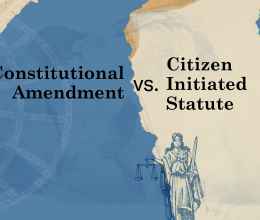Ohio has one of the largest combined jail and prison populations in the country. (Jail is where people are held pretrial or serve time for misdemeanors, while prisons are where people serve time for felonies.) Pre-pandemic, on any given day, over 70,000 individuals were held behind bars, with around 50,000 people in prison, and around 20,000 people in jail. This mass incarceration is devastating to individuals, families, and communities under normal circumstances, but during this pandemic, Ohio’s choice to incarcerate has become deadly.
Those held behind bars are often denied the opportunity to socially distance and practice good hygiene, the two keys to increase likelihood of staying healthy. This problem is exacerbated because jails and prisons in Ohio tend to be significantly overpopulated. Devastatingly, appropriate action was not taken to safeguard those held in Ohio prisons. As of May 29, over 71 prisoners have died along with four staff members. Their deaths were a policy choice. Governor DeWine, Director Acton, and Director Chambers-Smith chose not to take appropriate action to decarcerate our prisons, and as a direct result, people lost their lives. Fortunately, many local jails in Ohio did not follow suit. Across the state, judges, sheriffs, and prosecutors worked together to rapidly decrease their local jail populations in order to keep prisoners, staff, and their greater communities safe.
While these stakeholders should be applauded for their life-saving fast action, it’s important to recognize that some decarceration measures are better than others. Unfortunately, some of the measures used will ultimately create significant harm down the line, like offering more opportunities for coerced plea deals. Other decarceration measures are just good policies that should be permanently adopted after the pandemic, which would help level jail populations and ameliorate the need for future emergency depopulation efforts.
Ohio can and should be the best version of itself even without a crisis. This pandemic spurred stakeholders into action, but we need to apply pressure to make sure these same stakeholders do not resort back to their old, regressive ways. The “good” decaceration practices below should be seen as a guide to good policies that could and should become our new normal.
Good Decarceration Practices
- Eliminating or decreasing cash bail: Approximately two-thirds of Ohio’s jail population is comprised of legally innocent pretrial individuals who have not yet had their day in court. These individuals remain in jail, not because of what they have done, but because they do not have the money to pay for their release. This is wealth-based detention that violates the United States Constitution, and yet courts across Ohio standardly and reflexively set cost-prohibitive cash bail. Removing cash bail as a condition of release is a quick way to decrease jail populations in Ohio, and it also stops a typically unconstitutional practice.
- Counties utilizing this approach:
- Butler County
- Cuyahoga County
- Hamilton County
- Marion County
- Releasing individuals early: The maximum sentence someone spends in jail—as opposed to prison—is one year. Releasing people early, who are going to be released in less than a year anyway, is another great way to reduce jail populations.
- Counties utilizing this approach:
- Allen County
- Clark County
- Columbiana County
- Delaware County
- Erie County
- Franklin County
- Greene County
- Licking County
- Montgomery County
- Richland County
- Shelby County
- Washington County
- Releasing individuals who would have been sentenced to probation: Individuals are often held in jail for crimes that, even if convicted, would likely only lead to a probation sentence. This means they are being held for a crime that will ultimately not lead to the punishment of jail time. These individuals can be released early, because they are already likely to be released soon.
- Counties utilizing this approach:
- Allen County
- Delaware County
- Releasing people in jail for certain offenses: Many people are held in jails, and prisons, each day in Ohio who would be better served in their communities. These individuals pose no threat to individuals, and yet they remain behind bars. It is easy to categorically release these individuals based on crime type.
- Counties utilizing this approach:
- Allen County
- Butler County
- Clark County
- Cuyahoga County
- Erie County
- Franklin County
- Hamilton County
- Harrison County
- Highland County
- Huron County
- Jefferson County
- Lawrence County
- Licking County
- Richland County
- Ross County
- Shelby County
- Releasing medically vulnerable prisoners: Jail time should never be a death sentence. During this pandemic, for those with underlying health conditions, being confined in a congregate setting substantially increases the likelihood of death. To stop preventable deaths, releasing medically vulnerable individuals is the right thing to do.
- Counties utilizing this approach:
- Cuyahoga County
- Hamilton County
- Cite and release: Some counties chose not to book those charged with misdemeanors or non-violent offenses into the jail in the first place during the pandemic. Instead, like when you get a traffic ticket, individuals charged with some offenses are given a date and time to appear in court and avoid going to jail altogether. This is an excellent step, because it stops individuals from being put at risk of losing their jobs, their homes, and custody of their children as a result of being unnecessarily jailed.
- Counties utilizing this approach:
- Butler County
- Columbiana County
- Delaware County
- Franklin County
- Mahoning County
- Marion County
- Portage County
- Stark County
- Wood County
Bad decarceration practices
- Offering mass plea deals: In this country, 90% of convictions are made via plea deal. Usually, plea deals mean that a defendant pleads guilty, often to a lesser charge or for a smaller sentence. However, innocent individuals often feel coerced into taking plea deals, especially in states like Ohio that over rely on cash bail. For example, some individuals, depending on their charge, may be able to go home the same day if they enter a guilty plea, but fighting for their innocence might mean days, weeks, or months more in jail. This risk of coerced plea deals is heightened if your choice is to remain in a jail and be at greater risk of contracting COVID-19. Those who plead guilty end up with a record, and often suffer from collateral consequences. Unfortunately, instead of, or in addition to, using the decarceration tools above, some courts chose to offer additional court dates for plea deals. This likely led to innocent individuals pleading guilty to crimes they did not commit.
- Counties unfortunately using this approach:
- Cuyahoga County
- Postponed sentences: during the global health pandemic, some individuals have been provided the opportunity to postpone their jail sentence. While this is a helpful emergency safeguard, it is not a depopulation effort, as it just postpones the incarceration. Further, it begs the question: If someone is not a threat and can safely remain in the community now, why should we pay taxpayer dollars to incarcerate them later? Especially when there are other forms of punishment (i.e. home confinement, electronic monitoring) that can serve as punishments, do not put individuals at risk of being exposed to the virus, and save taxpayer dollars.
- Counties unfortunately using this approach:
- Logan County
- Washington County







